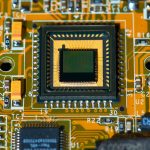The rise of technology has influenced every facet of our lives, from the way we communicate to how we conduct business. It’s also been a game-changer in healthcare, with transformative breakthroughs like telesurgery. This radical surgical technique allows surgeons to operate on patients remotely, using robotics and high-speed internet. It has opened up new horizons in patient care, but what does the future hold for telesurgery as we move further into the era of 5G technology and sophisticated robotics? This article will delve into the prospects.
The Present State of Telesurgery
Let’s start by understanding what telesurgery looks like today. The concept began to take shape with the advancement of technology and the internet. In these procedures, a surgeon controls a robotic system to perform surgery on a patient, even if they are thousands of miles away.
Also to see : Can Smart Plasters with Wireless Sensors Detect Infection in Wounds?
Telesurgery has been a boon particularly in areas with limited access to specialized healthcare. The system enables patients to receive expert surgical care without the need for travel, reducing time and costs. Given the current state of telesurgery, there’s a lot to be excited about. However, there are still several challenges that need to be overcome for it to achieve its full potential.
The Limitations of Current Telesurgery Systems
While telesurgery has been revolutionary, the existing technology still has limitations. One significant issue is latency – the time delay that occurs in the transmission of data over the internet. Even the smallest latency can create a ‘lag’ between the surgeon’s movements and the robotic system’s response, which could potentially affect the surgery’s precision.
This might interest you : How Is AI Being Applied to Personalize Music Streaming Services?
Moreover, these robotic systems require robust and reliable internet connections, which can be a challenge in remote or underdeveloped areas. There are also concerns about the security of patient data and the risk of cyberattacks. Lastly, there’s the matter of cost. While telesurgery can potentially save patients money on travel expenses, the cost of implementing and maintaining these robotic systems can be prohibitive for many hospitals.
The Impact of 5G on Telesurgery
The promise of 5G technology is set to address many of these limitations, especially latency. With incredibly high-speed data transmission and low latency, 5G will allow for real-time interaction between the surgeon and the robotic system. This means the surgeon could perform more complex procedures remotely, with virtually no delay in response.
Additionally, 5G networks are more reliable than their predecessors, promising consistent, stable connections even in remote locations. This could open up telesurgery to areas that have previously been unreachable. It’s clear that the integration of 5G into telesurgery will significantly enhance the procedure’s safety, efficiency, and accessibility.
The Role of Robotic Advancements in Telesurgery
Beyond 5G, advancements in robotics are also set to push the boundaries of what’s possible in telesurgery. As robotic technology becomes more sophisticated, it’s expected that robotic surgical systems will become more precise, flexible, and capable of mimicking the human touch.
Imagine a future where robotic systems can provide tactile feedback to the surgeon – a feature called haptic feedback. This would allow the surgeon to ‘feel’ what the robot is touching, offering a level of precision and control that’s currently unavailable in telesurgery.
Furthermore, with the rise of artificial intelligence (AI) and machine learning, these robotic systems could even learn from each surgery performed, continually improving their accuracy and efficiency. The combination of advanced robotics and AI holds tremendous potential for the future of telesurgery.
The Future Outlook of Telesurgery
With these advancements on the horizon, the future of telesurgery seems bright. The integration of 5G and advanced robotics will open up new possibilities for remote surgery. Not only will telesurgery become more precise and reliable, but it will also become more accessible to patients in remote areas.
Furthermore, as the technology becomes more mainstream and its implementation costs decrease, more hospitals around the world will be able to offer telesurgery. This will create a more equitable healthcare system, where patients have access to the best surgical care, regardless of their location.
While telesurgery still has challenges to overcome, the potential benefits are enormous. As we delve deeper into the 5G era and continue to advance in robotics, it’s an exciting time to envision what the future of telesurgery will look like.
Advancements in Haptic Feedback and AI in Telesurgery
With the progression of time and technology, the world of telesurgery continues to evolve. One of the latest advancements in this field comes from combining robotic surgical systems with haptic feedback and artificial intelligence (AI).
Haptic feedback, a technology that simulates the sense of touch, is a ground-breaking feature that will bring a new level of realism to telesurgery. In the context of telesurgery, haptic feedback allows the surgeon to ‘feel’ what the robot is touching. This feature provides the surgeon with a physical sensation, enhancing their control and precision in real-time. According to a recent study published on Google Scholar, integrating haptic feedback into robotic surgery has shown to significantly improve the accuracy of surgical procedures.
On the other hand, the role of AI in telesurgery cannot be ignored. AI and machine learning have the potential to revolutionize telesurgery by making robotic systems ‘smarter’. By learning from each surgery performed, these systems can continually enhance their accuracy and efficiency. As per a PubMed Google article, AI-assisted robotic telesurgery can reduce the duration and complications of surgical procedures.
Furthermore, innovations in AI and machine learning may also lead to autonomous robotic surgery in the future. This concept, though still at a theoretical stage, could pave the way for long-distance surgeries performed entirely by an AI-controlled robotic system.
Conclusion: The Potential of Telesurgery in 5G Era
As we delve deeper into the era of 5G and advanced robotics, the potential of telesurgery keeps growing. With the integration of 5G, latency issues that previously affected the precision of remote surgery are set to become a thing of the past. High-speed, reliable connections will become the norm, enabling real-time, long-distance surgical procedures.
The advancements in haptic feedback and AI are poised to bring unprecedented levels of precision and control to telesurgery. In the near future, a surgeon could ‘feel’ what the robot is touching and the robotic system could learn and improve from each surgery.
However, as we embrace these promising advancements, we must also address the challenges that come with them, such as cybersecurity risks and the high cost of implementing and maintaining these sophisticated systems. As technology advances, we must ensure that telesurgery remains accessible and cost-effective for all.
With the promising potential of 5G and advanced robotics, telesurgery is set to redefine the realm of healthcare. It’s an exciting time, as we stand on the cusp of a revolution in surgical care. The future of telesurgery is bright, and we can only imagine what the next breakthrough will be.











